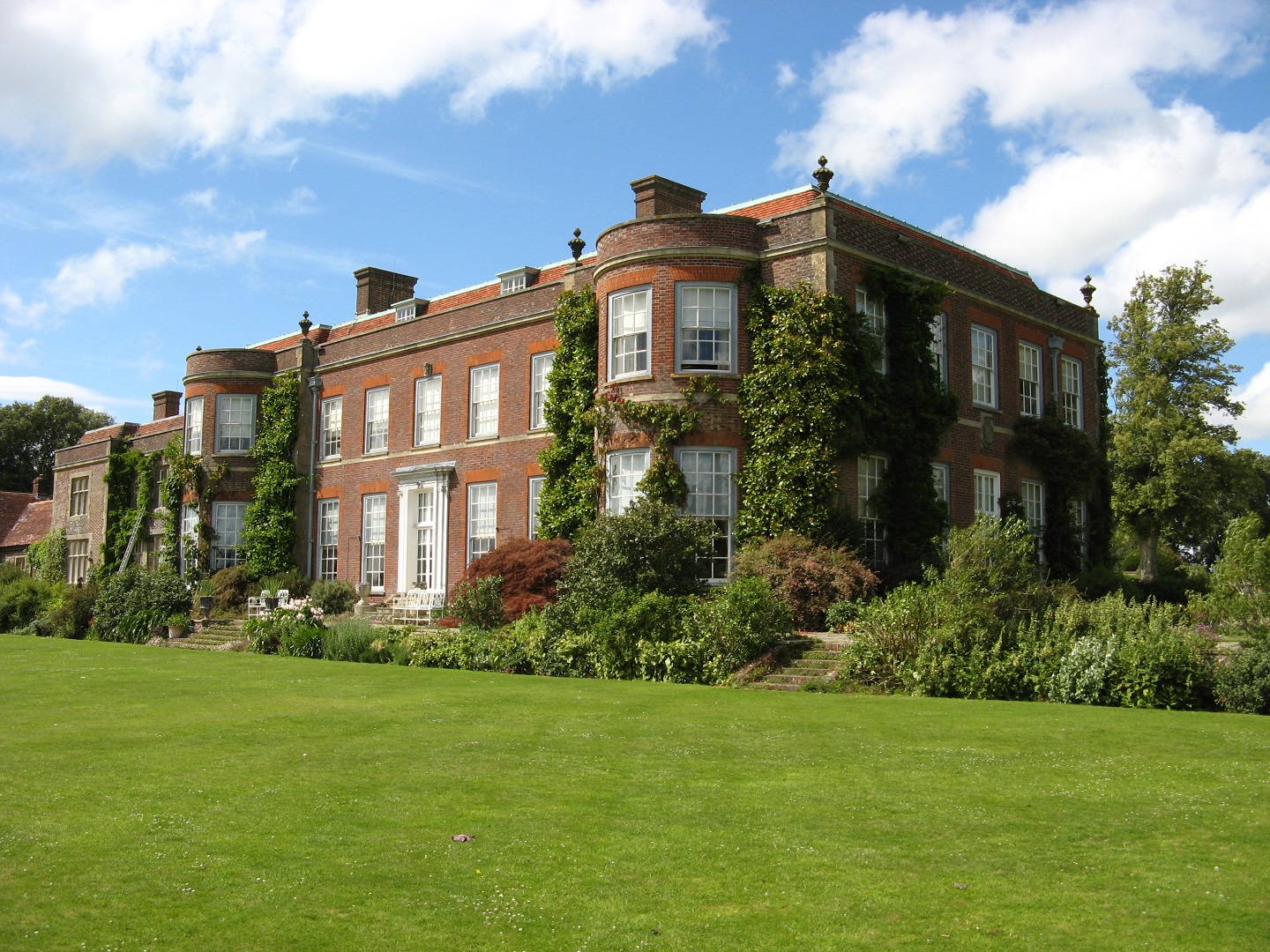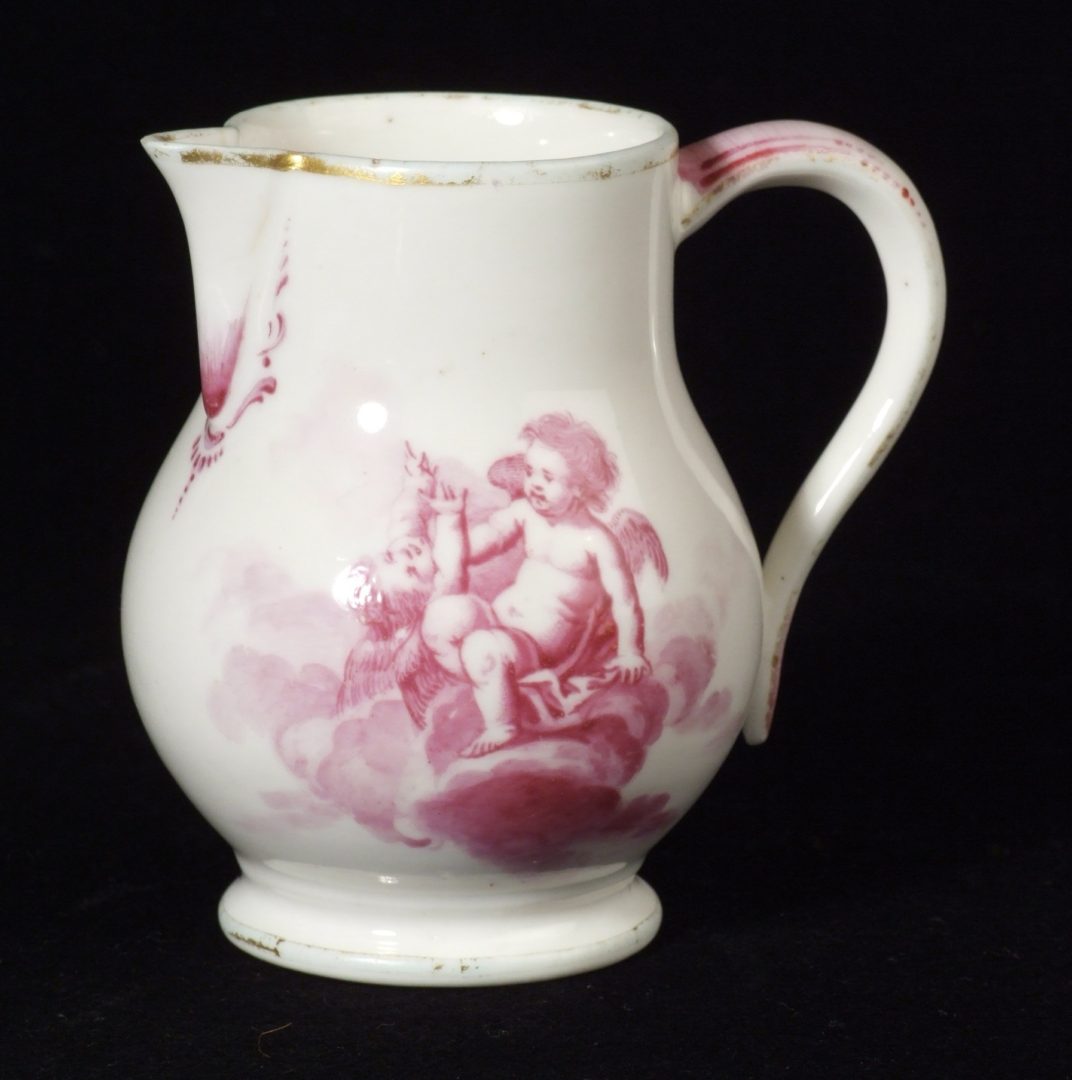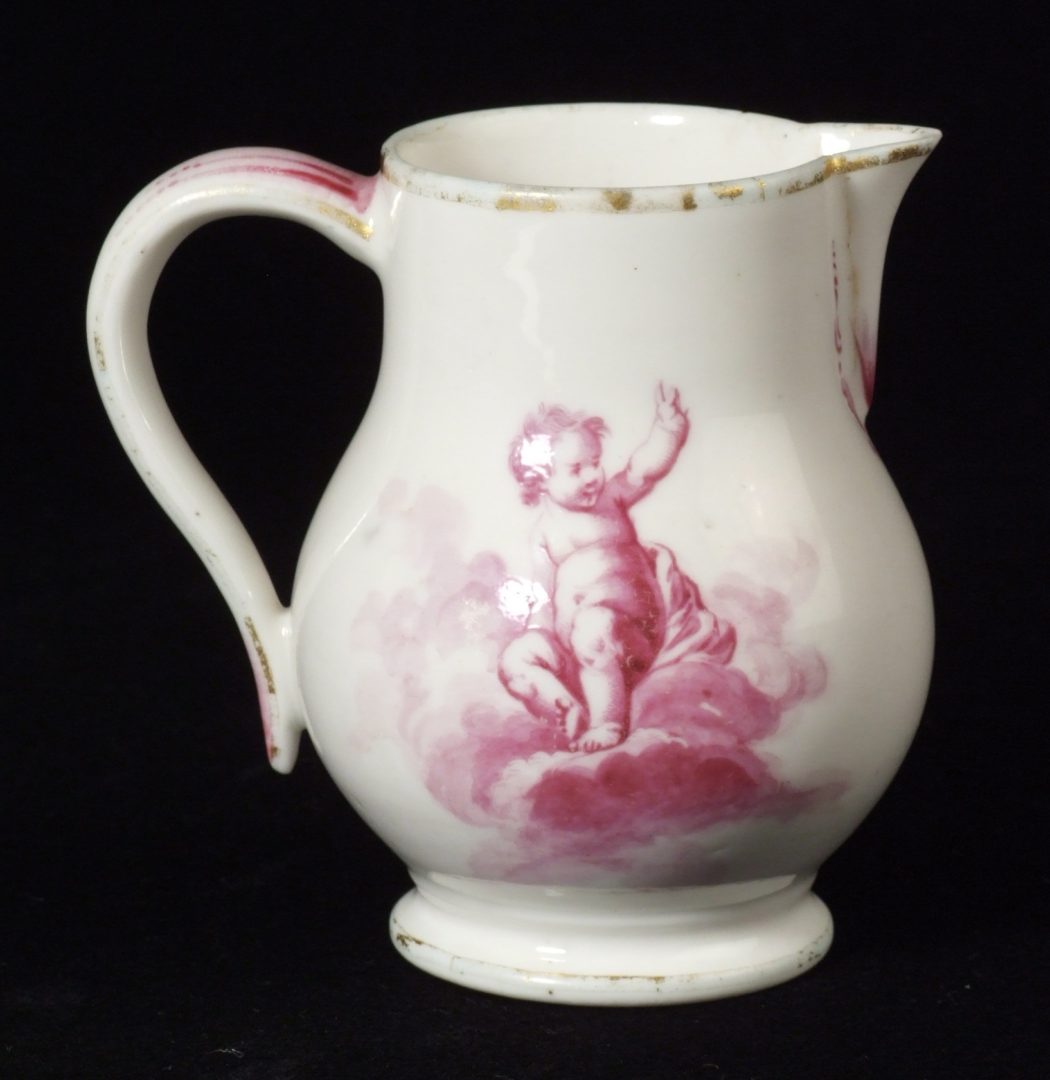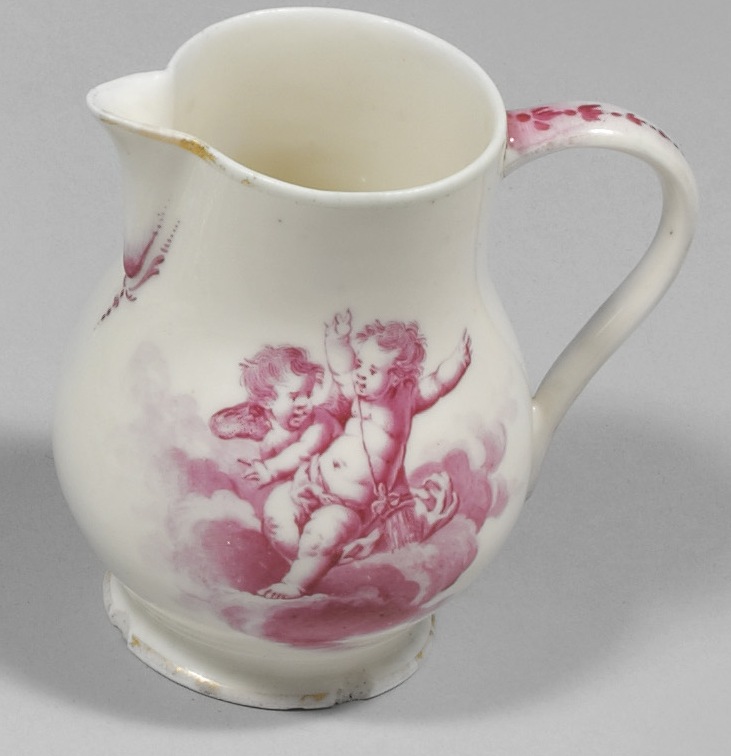1 Hinton Ampner House, a National Trust property located near Alresford, Hampshire, England. Through the remodeling efforts of its last owner, Ralph Stawell Dutton (1898–1985), 8th and last Baron Sherborne, the original hunting lodge, built in 1793, underwent a transformation into a country manor house that reflected Dutton’s passion for the Georgian style.
2 A Mennecy porcelain jug, decorated by Fidelle Duvivier, c. 1766-68. H 8.5 cm, with an incised D.V. mark. CMS_HIN0990. Hinton Ampner, Hampshire. © National Trust Images / Sophia Farley
While perusing the online collections of the National Trust I came across the images of a small Mennecy jug (2, 3) whose decoration immediately reminded me of another one of this manufactory, also painted by Fidelle Duvivier with little cupids on clouds (4). It was the earliest example of this type of decoration by Duvivier that I’d found, and I included it in my book.(i) This second example (at Hinton Ampner House, 1) is equally important, and I became curious to know who its owner was and more about its present home.
For fifty years the unmarried Ralph Stawell Dutton, the 8th and last Lord Sherborne, devoted his fullest attention to the Hinton Ampner estate that he had inherited in 1935, leaving behind a storied legacy recorded in his own writings, a widely acclaimed 12-acre garden that he designed himself, as well as a neo-Georgian country manor house on which he left his own indelible mark. With his death in 1985 it was given to the National Trust.(ii)
The estate dates back to Tudor times when a large 16th-century manor house was built and in 1597 leased by Sir Thomas Stewkley, a distant relative of the Dutton family. It stood not far from the present-day neo-Georgian house until it was torn down in 1793 by an ancestor from the family’s Stawell (Bilson-Legge) lineage. Prior to its demolition it had had the notorious reputation of being haunted.(iii)
As a replacement for this Tudor manor house, Henry Legge, 2nd Baron Stawell of Somerton, built a Georgian residence from plain yellow brick about 50 yards to the south. In 1803 his daughter, Mary Bilson-Legge, married John Dutton (1779-1862), Ralph’s great-grandfather. On the death of her father seventeen years later, Mary inherited various properties including Hinton Ampner. While the Duttons preferred not to reside there, their second son, John Thomas Dutton (1810-1884) later decided to move in with his wife Lavinia and their children in 1857. From 1865 to 1868 he proceeded to transform the Georgian house into a Victorian-Gothic style mansion with too few creature comforts – according to his grandson Ralph, who later recorded family stories and his memories of growing up there in the book, Hinton Ampner. A Hampshire Manor (first published in 1968; republished by the National Trust in 2010). (Enjoy a selection of pictures and Dutton’s humorous anecdotes at the main website https://www.nationaltrust.org.uk/hinton-ampner/features/the-story-of-hinton-ampner).
After inheriting the estate in 1935, Ralph Dutton wasted no time in making changes to his family’s home, and with the help of two architects sought to restore it to the Georgian manor house it might have been (or become) in the eighteenth century. Over the years he purchased fine Georgian period paintings, furnishings, books and ceramics to fulfill this vision. He spent time searching the countryside for any architectural items that could be incorporated into the new house – from doors and shutters to whole room elements such as a plasterwork ceiling from a Robert Adam townhouse, a fine Adam marble fireplace, and other objets d’art.
Even before inheriting the estate in 1935 he had devoted much attention to the garden and grounds, and had been allowed to develop designs for the 12 acres of gardens, eventually recording many of his ideas in another book, The English Garden (1937).
After the interruptions caused by the war years, he both resumed his efforts to create a garden that would serve as a place of tranquility, and continued to add elegant touches to his home. But in April 1960 a severe setback to his achievements came in the form of a devastating fire that started in the upstairs library and spread quickly through the rooms. Dutton only discovered it while returning from a walk in the woods. With a courageous spirit and the help of his architects, he supervised the restoration work and structural improvements to the house over the next three years, while replacing some of the lost art works. Fortunately, the house was fully habitable again by May 1963.
From the house steward of Hinton Ampner, Alison Smith, I learned a few details regarding their little Mennecy jug, which is on display in one of the cabinets on the first floor of the house. The card file offered the following details about it:
“A Mennecy pear-shaped cream jug, soft-paste porcelain, painted ‘en camaieu rose’ with cupids amongst clouds, incised ‘DV’ (duc de Villeroy), Mennecy, ca. 1755-65. Purchased by Ralph Dutton in December 1963, a ‘Mennecy cream jug with decoration of cupids 1750/55’, from H. R. Marden King, Winchester, for £22.10.10 (fol. 203).
3 The reverse side of the Mennecy porcelain jug shown in Fig. 2. CMS_HIN0990. Hinton Ampner, Hampshire. © National Trust Images / Sophia Farley
4 A Mennecy porcelain jug with putti decoration in camaïeu rose by Fidelle Duvivier, c. 1766-68. H 9 cm, with an incised D.V. mark. Private collection. Photo: Robert et Baille, Paris.
I informed Alison that the jug was painted by Fidelle Duvivier ca. 1766-68 and referred her to the attribution of a very similar jug (4) I’d made to him in my book. These two pieces indicate that Duvivier was decorating leftover Mennecy blank porcelain during the period that he was employed as a decorator at Sceaux,(iv) and I expect there are more examples to be found in such stately (and storied) surroundings.
NOTES
(i) Charlotte Jacob-Hanson, In the Footsteps of Fidelle Duvivier (Tucson, Arizona: Westpress, 2016), p. 30, ill. 43.
(ii) The National Trust has a short informative clip on Hinton Ampner: https://vimeo.com/118045768 . See also https://www.britainexpress.com/attractions.htm?attraction=175 .
(iii) See http://www.haunted-britain.com/hinton-ampner.htm Henry Bilson-Legge, 2nd Baron Stawell (1708–1764) married Mary Stawell (1725/26–1780). She had succeeded to her father’s estates but not his title, which her husband and later, their only son Henry, received. The couple apparently seldom stayed at the Tudor manor house at Hinton Ampner, and after Henry’s death “Lady Stalwell” rented it out in the 18th century. Reports of mysterious ghostly disturbances were recorded and have been the subject of several books. See also https://www.nationaltrust.org.uk/hinton-ampner/features/the-ghosts-of-hinton-ampner. Their son, Henry Stalwell Bilson-Legge (1757-1820), had the Tudor structure torn down in 1793 and built a Georgian structure about 50 yards to the south. He and his wife, Mary Curzon, had one daughter, Mary (1780-1864), who married John Dutton, 2nd Baron Sherborne (1810-1884) – this was Ralph Dutton’s great-grandfather.
(iv) In 1766 the Sceaux managers, Jacques and Jullien, leased the Mennecy factory until 1772, when they moved it to Bourg-la-Reine, closer to Sceaux and Paris.




